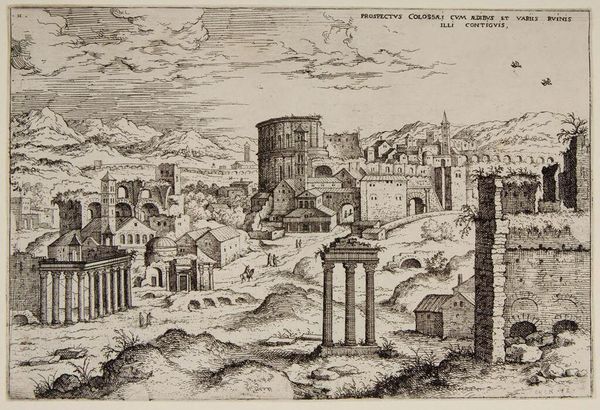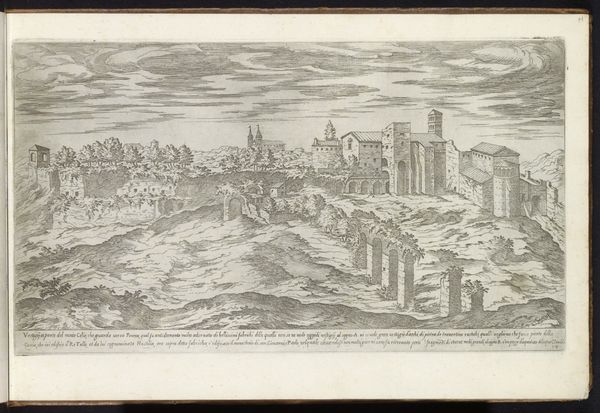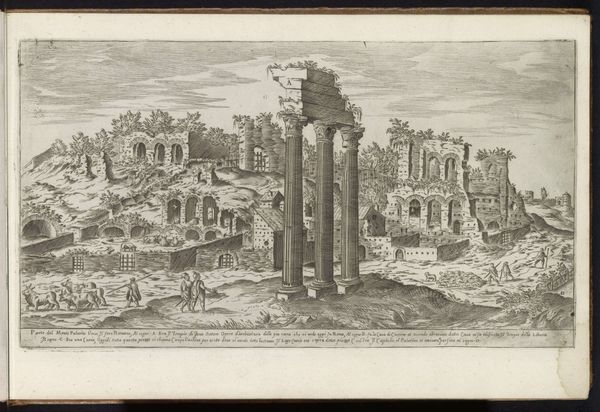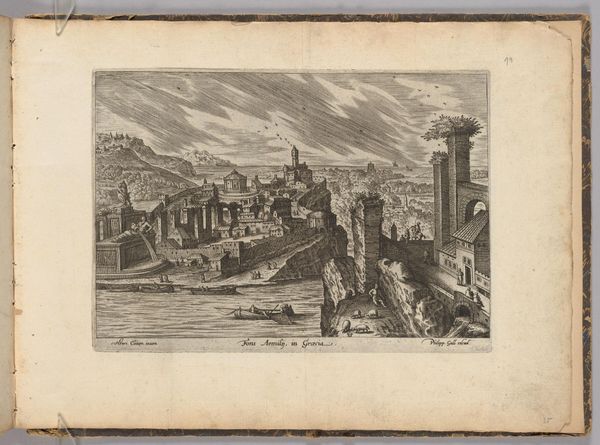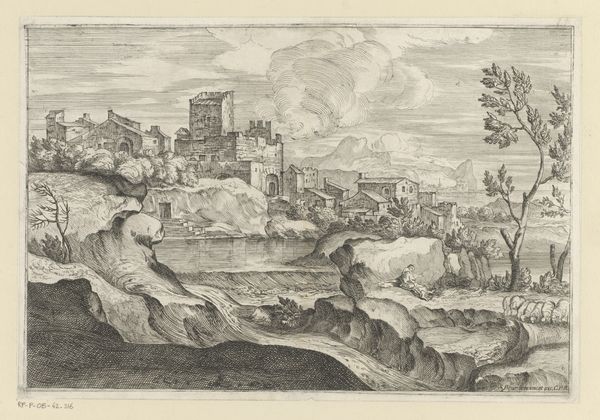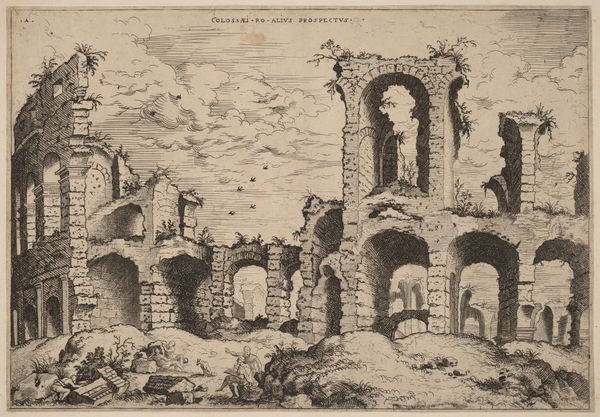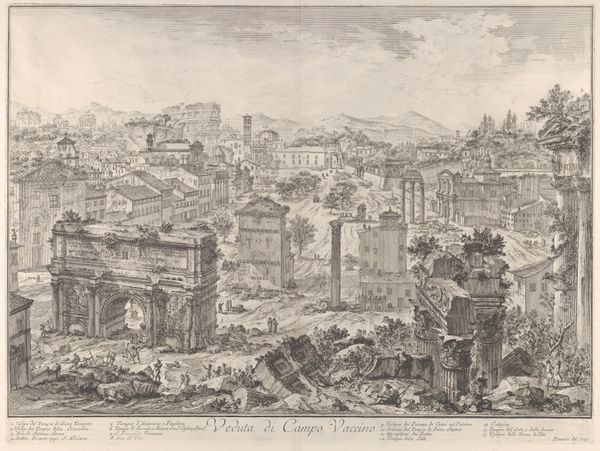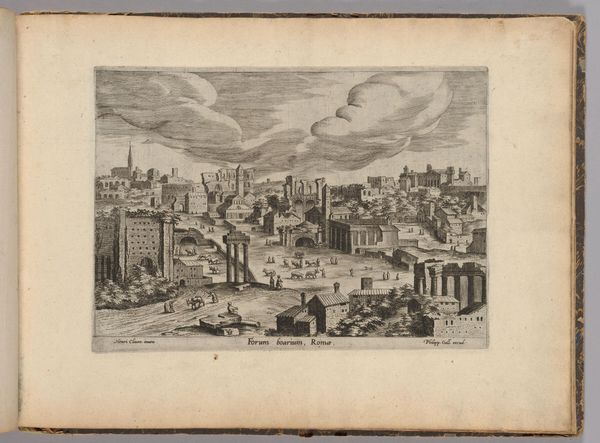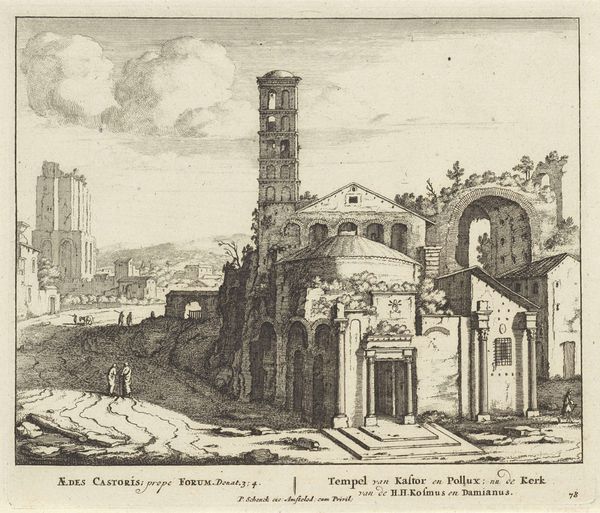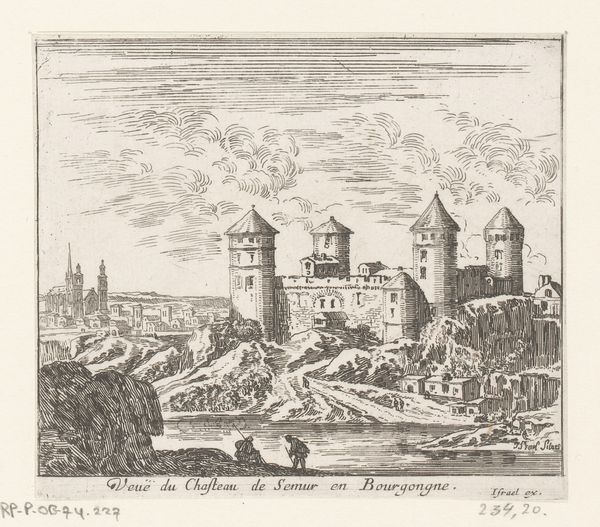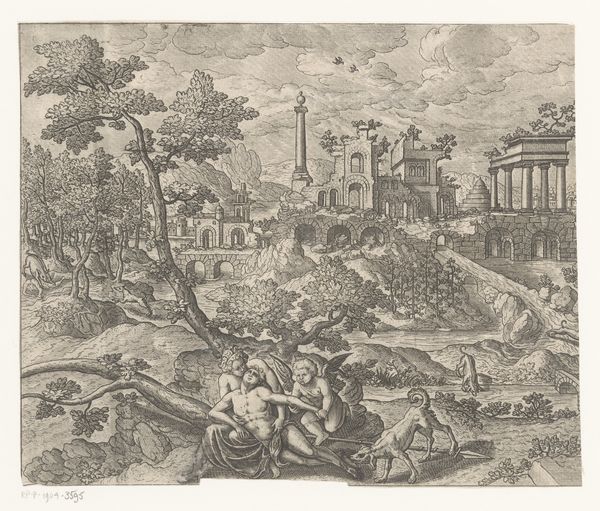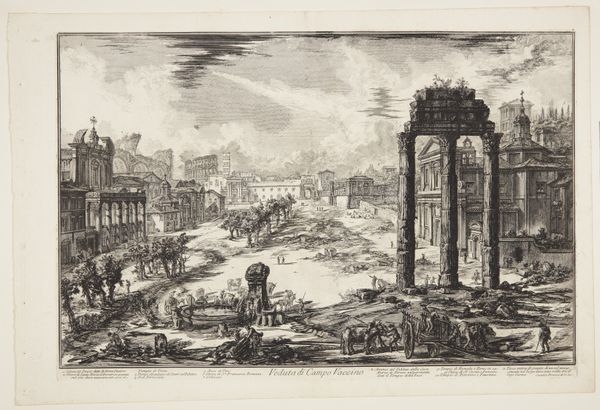
print, engraving
# print
#
landscape
#
perspective
#
cityscape
#
history-painting
#
italian-renaissance
#
engraving
Dimensions: sheet (trimmed to plate mark): 20.1 x 30.1 cm (7 15/16 x 11 7/8 in.)
Copyright: National Gallery of Art: CC0 1.0
Editor: Here we have Hieronymus Cock’s "View of the Forum," an engraving from around 1550. I'm immediately struck by the way the architecture is meticulously rendered, almost like a stage set, but it’s also crumbling in places. It feels both grand and melancholic. How do you interpret this work, focusing on its formal elements? Curator: The spatial arrangement is immediately notable. Cock manipulates perspective expertly, guiding the eye from the foreground ruins towards the distant mountains. Observe the layering; it is not merely representational, but structural. Each layer defines a plane, creating a complex, almost mathematical, articulation of depth. Do you notice how the diagonal lines of the landscape contrast with the verticality of the standing ruins? Editor: Yes, the contrast between the decaying architecture and the natural landscape is compelling. It’s almost as if nature is reclaiming the city. The density of the line work also differs dramatically. How does that inform your reading? Curator: Precisely! The density, or perhaps the careful distribution, of the engraved lines contributes significantly. In the foreground, the lines are thicker, more numerous, defining textures and creating a sense of tangible decay. As the eye moves towards the background, the lines become finer, sparser, evoking a sense of distance and ethereal lightness. The use of hatching and cross-hatching also subtly models form and mass throughout the composition, enhancing depth perception. It becomes a sort of map, wouldn't you agree? Editor: Definitely, I'm starting to see it less as a picturesque scene and more as an analytical study of form and space using line as the primary tool. This focus really makes me think about the artistry behind printmaking itself. Curator: Precisely. What may initially seem like a straightforward landscape is in fact a carefully orchestrated study in perspective, texture, and form. We have examined how the work operates through the inherent language of line. Editor: This piece shows how technique itself carries meaning, going beyond the literal depiction. Curator: Indeed, it speaks to the enduring power of close observation. A work of architecture reduced to its most fundamental element of shape.
Comments
No comments
Be the first to comment and join the conversation on the ultimate creative platform.
